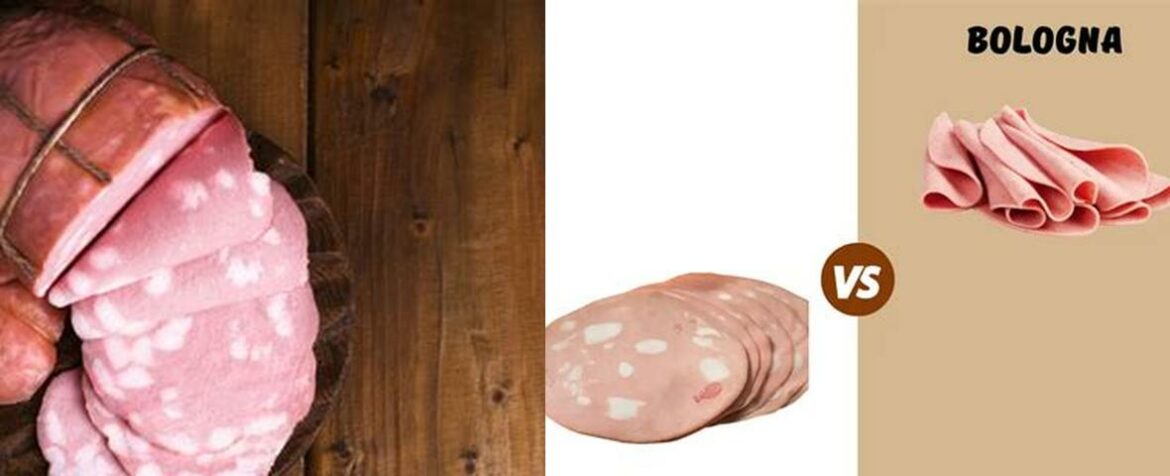Mortadella vs bologna: Mortadella vs Bologna: A Battle of Italian Delights
Are you a fan of Italian cuisine? Do you often find yourself torn between two delectable deli meats – Mortadella and Bologna? Well, fear not, because we’ve got you covered! In this blog post, we’re going to dive deep into the world of Mortadella and Bologna, and unravel the differences between these two mouthwatering Italian treats.
Prepare to have your taste buds tantalized as we explore the origins, ingredients, flavors, and even the cultural significance of Mortadella and Bologna. Whether you’re a food enthusiast, a curious connoisseur, or just someone looking to settle the debate once and for all, this guide will leave you craving for more.
So, grab a seat, loosen your belt, and get ready for a delicious journey through the world of Mortadella and Bologna. Let’s settle this culinary clash once and for all!
Mortadella vs Bologna: A Detailed Comparison of Two Italian Delights
Mortadella and bologna, two cured meats with Italian origins, have captivated taste buds for centuries. While they share similarities in their preparation and usage, distinct differences set them apart in terms of texture, flavor, production methods, and culinary applications. Delve into this comprehensive comparison to unravel the unique characteristics of each delicacy.
Origins and Production Methods: A Tale of Two Cities
Bologna, a city in northern Italy, gave its name to the processed meat product that originated within its walls. Bologna, also known as baloney in some regions, is crafted from a blend of pork, beef, and sometimes veal. Its mass production involves the use of filler ingredients such as corn syrup solids or potato starch, resulting in a smooth and consistent texture.
Mortadella, on the other hand, has a richer history rooted in the Italian city of Bologna. This delectable meat is made solely from finely ground pork, sometimes accompanied by veal or beef. Unlike bologna, mortadella’s production remains rooted in traditional methods, avoiding the use of fillers. The result is a meat with a distinct texture and a complex flavor profile.
Texture and Flavor: A Symphony of Contrasts
Mortadella stands out with its visibly discernible chunks of meat, a testament to its artisanal production. Its texture is characterized by a delightful combination of smoothness and a satisfying chew. The addition of spices like black pepper and myrtle berries, along with the occasional inclusion of pistachios, creates a symphony of flavors that tantalize the palate.
Bologna, in contrast, boasts a smooth and homogenous consistency. Its flavor is generally milder, with a subtle sweetness, making it a versatile ingredient in various culinary creations.
Cooking and Serving: A Culinary Journey
Mortadella’s rich flavor and distinct texture make it a culinary chameleon, adaptable to various cooking methods. It can be enjoyed cold, sliced thinly for sandwiches or cubed with cheese for snacking. When cooked, mortadella should be handled with care to preserve its delicate flavor and texture.
Bologna, with its milder taste and firm texture, is commonly used in freshly cooked recipes. It can be fried or grilled, adding a savory touch to sandwiches, pizzas, and pasta dishes. Sliced thin, bologna becomes a delightful addition to classic American sandwiches.
Health Considerations: A Matter of Balance
While both mortadella and bologna can be enjoyed as part of a balanced diet, moderation is key. Mortadella typically contains fewer calories and less fat than bologna, but slightly more protein and sodium. Both meats are considered processed meats, which are generally not considered the healthiest options.
For those seeking healthier alternatives with similar taste and texture, roasted turkey or chicken are excellent choices. These leaner meats offer a comparable flavor profile without the excessive fat and sodium found in processed meats.
Conclusion: A Matter of Personal Preference
The choice between bologna and mortadella ultimately boils down to personal preference and dietary needs. Bologna’s versatility and milder flavor make it a popular choice for everyday meals and quick snacks. Mortadella, with its complex flavor profile and artisanal production methods, is a gourmet delight best savored in its purest form or as an ingredient in carefully crafted dishes.
Whether you prefer the simplicity of bologna or the sophistication of mortadella, both meats offer a unique culinary experience that has stood the test of time. Embrace the diversity of Italian cuisine and enjoy these delectable meats in moderation as part of a balanced diet.
FAQ about Mortadella Vs Bologna
Q: What is the difference between mortadella and bologna?
A: Mortadella and bologna are both Italian cured meats, but they have distinct differences in terms of texture, flavor, production methods, and culinary applications.
Q: Where do mortadella and bologna originate from?
A: Mortadella originates from the Italian city of Bologna, while bologna has its roots in the city of the same name in Italy.
Q: What are the main ingredients used in mortadella?
A: Mortadella is made primarily from finely ground pork, and sometimes includes veal or beef.
Q: How is mortadella different from bologna in terms of production methods?
A: Mortadella is produced using traditional methods and does not contain fillers, while bologna may contain fillers and is produced using more modern methods.
Q: How would you describe the texture and flavor of mortadella?
A: Mortadella has a distinct texture and a complex flavor profile, making it a gourmet delight best savored in its purest form or as an ingredient in carefully crafted dishes.
Q: Which one is considered healthier, mortadella or bologna?
A: While both mortadella and bologna can be enjoyed as part of a balanced diet, mortadella typically contains fewer calories and less fat than bologna, but slightly more protein and sodium. Both meats are considered processed meats and should be consumed in moderation.


